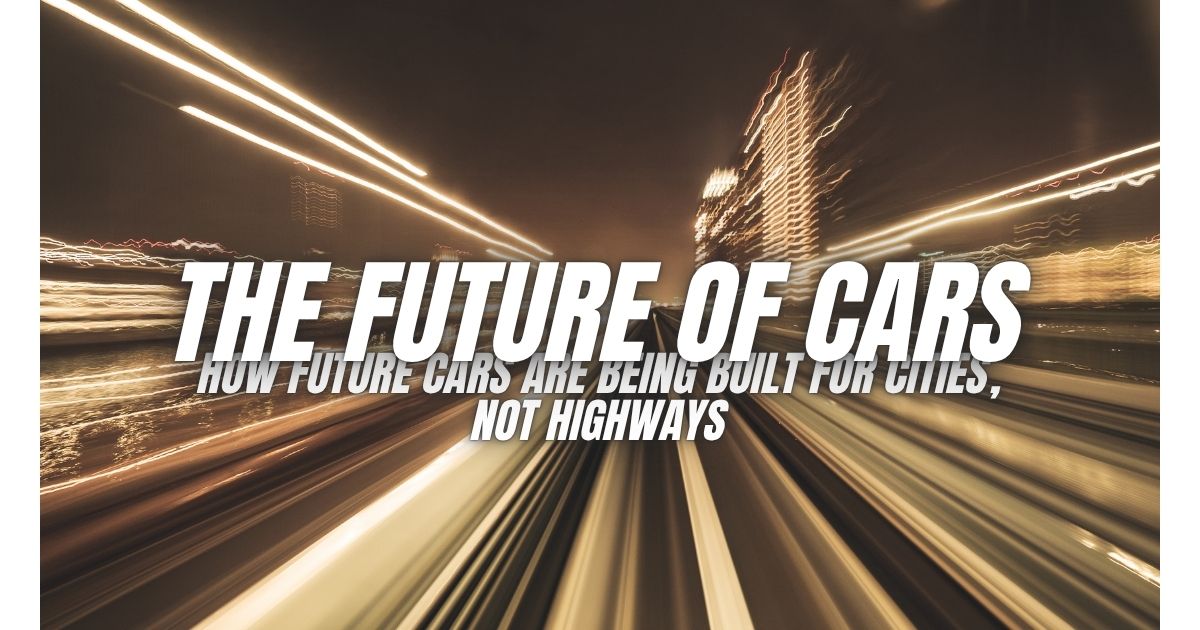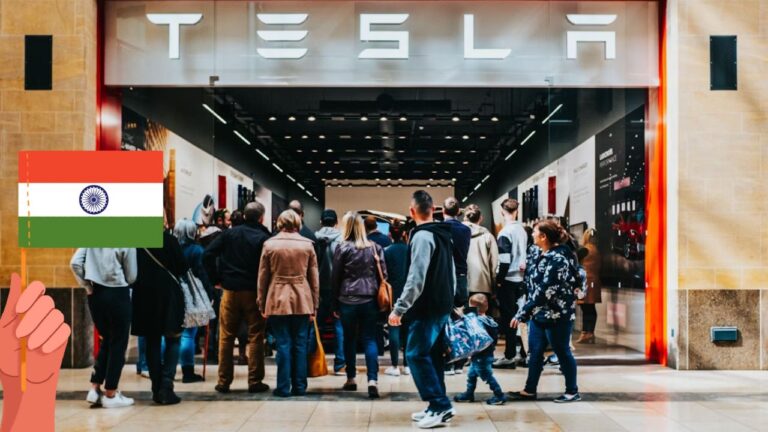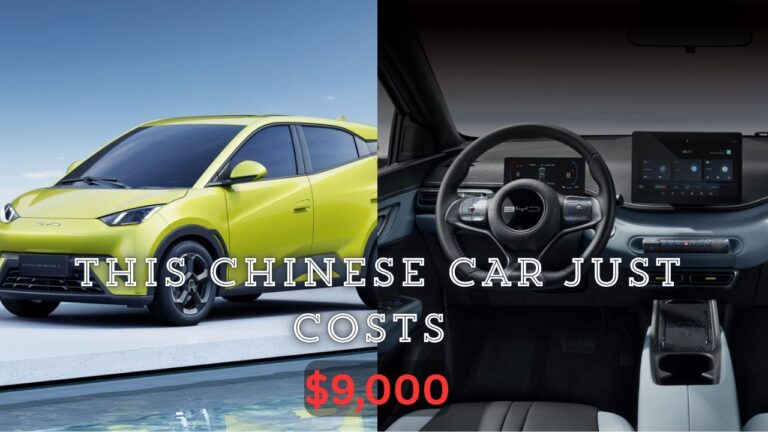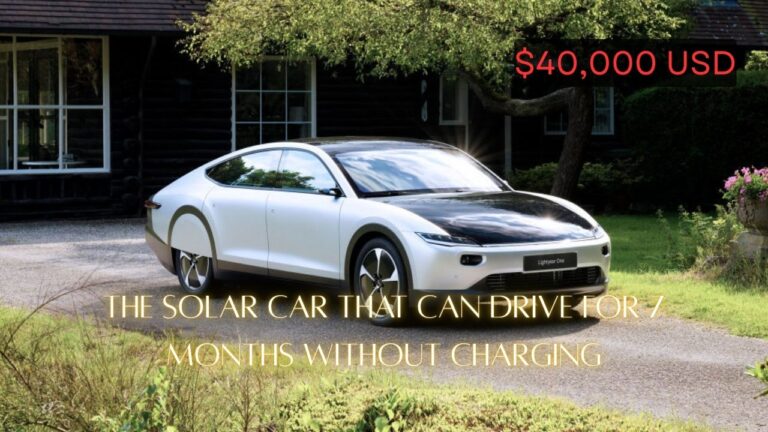The future of mobility is shifting gears. Explore how urban innovation is reshaping car design—moving away from highway dominance toward smarter, more sustainable solutions for modern cities.
Rethinking the Open Road: Why Cities Are the New Focus
For generations, car design centered on one ideal: the freedom of the highway. Powerful engines, sleek aerodynamics, and luxury interiors were all developed with long-distance driving in mind. But today’s drivers live a different reality.
Most people no longer spend their days cruising along open roads. Instead, they inch through traffic in tight urban grids, circle endlessly for parking, and navigate streets shared with cyclists, buses, and pedestrians. The dream of the highway has given way to the challenge of the city—and automakers are responding.
The growing dominance of urban living is forcing a fundamental shift in vehicle design. Today’s cars are being built not for speed and distance, but for space efficiency, environmental responsibility, and digital connectivity in densely populated areas.
Urban Growth and the Decline of Highway-Centric Design
The stats make the story clear:
- Over 55% of the world’s population lives in urban areas, expected to reach 68% by 2050.
- Younger generations are delaying or abandoning car ownership, especially in cities with robust public transport.
- Short commutes, stop-and-go traffic, and parking scarcity have replaced the long-distance drive as the default use case.
This isn’t a passing trend—it’s the foundation of a new era in mobility. And in this era, designing cars for the highway is like designing airplanes for bike lanes. The environment has changed, and design must follow.
From Horsepower to Human-Centric Design
In the old model, performance dominated the conversation. A vehicle’s value was often judged by how quickly it could go from zero to sixty or how smoothly it handled curves at high speed. But future-focused car design prioritizes people over power.
Key shifts in priorities include:
- Compact dimensions to fit into tighter spaces
- Lightweight materials for efficiency in slow traffic
- Enhanced maneuverability for navigating dense, unpredictable streets
- Focus on safety for pedestrians and cyclists
- Quiet, zero-emission operation for better air quality and reduced noise pollution
Functionality now means being able to park in micro spaces, drive short trips on electric range alone, and operate without disrupting the rhythm of the city.
Smart Cities Demand Smarter Cars
Cities themselves are evolving. From 5G-connected infrastructure to intelligent traffic lights, urban areas are becoming more responsive and data-driven. Car design is being pulled into this transformation.
Future cars are no longer standalone machines. They’re nodes in a smart network—communicating with everything from roads and bridges to buildings and public transit systems.
Features shaping smart urban cars include:
- Vehicle-to-Infrastructure (V2I) communication for real-time routing
- Advanced driver-assist systems (ADAS) to reduce accidents
- Autonomous capabilities for first-mile and last-mile travel
- App-based control systems for fleet sharing and micro-rentals
- AI-driven behavior tracking to personalize settings and suggest efficient routes
These cars aren’t just connected—they’re deeply embedded in the way modern cities function.
Interior Redesign: A New Approach to Cabin Space
Urban vehicles aren’t just smaller on the outside—they’re smarter on the inside. Since city driving usually involves short trips at lower speeds, the focus has shifted from performance to experience.
This has led to a reimagining of car interiors:
- Flat floors and open layouts to maximize usable space
- Swiveling or reconfigurable seats for social interaction or solo productivity
- Touchscreen controls and voice interfaces replacing buttons and knobs
- Noise reduction and climate comfort systems for improved well-being
- Modular cargo and seating zones that adapt to personal or commercial use
Car cabins are becoming like mobile living rooms or workspaces—places to relax, read, work, or interact—not just drive.
The Rise of Micro and Modular Mobility
Another major force in urban car design is the explosion of micro-mobility and modular vehicle platforms. With ownership patterns changing and sustainability becoming urgent, cars are being built to do more—with less.
We’re seeing new forms of vehicles designed from the ground up for city life:
- Micro EVs like the Citroën Ami or Microlino: ultra-compact, affordable, electric city cars
- Modular delivery vehicles like the Canoo MPDV or Arrival Van: designed for logistics and fleet use
- Autonomous pods such as Toyota e-Palette: capable of transporting people, goods, or functioning as mobile services
- Subscription-based or fleet-managed vehicles that eliminate the need for personal ownership
These vehicles are often battery-powered, app-operated, and built for shared use, short trips, and space efficiency.
Electrification: A Necessity, Not a Luxury
With cities pushing for cleaner air and governments imposing deadlines on internal combustion engine (ICE) sales, the transition to electric is not optional—it’s foundational.
Why EVs are ideal for cities:
- No tailpipe emissions means reduced urban pollution
- Regenerative braking improves efficiency in stop-and-go traffic
- Less maintenance and lower operating costs for fleet managers
- Quieter operation improves city soundscapes
- Compact electric drivetrains allow for more innovative designs
Cities like London, Oslo, and Shenzhen have already implemented zero-emission zones and are subsidizing EV infrastructure. As charging stations become more common and battery tech improves, electric cars will become the urban default.
Autonomy: Designed for the Urban Flow
While much of the media attention on autonomous vehicles has focused on highway travel, the most practical and immediate use case for autonomy is urban.
Self-driving systems excel in the city when paired with:
- Mapped, predictable routes for shuttles or deliveries
- Geofenced operational zones
- Speed-limited environments
- Dense demand for last-mile mobility
We’re already seeing early deployments of autonomous delivery bots, ride-hailing pods, and driverless shuttles in major cities across Asia, Europe, and North America. These systems reduce congestion, eliminate parking needs, and operate continuously—making them perfect candidates for sustainable urban fleets.

Blurring the Line Between Vehicle and Infrastructure
Future vehicles won’t just operate in cities—they’ll function as an extension of the built environment. This is where car design starts to overlap with urban architecture and civic planning.
We’re entering an era where cars may:
- Dock into smart buildings for charging and data exchange
- Integrate with public transit networks to serve as first/last-mile connections
- Serve as mobile pop-up shops or service units in a gig economy
- Adjust their behavior based on location-specific rules (speed, lighting, emissions)
Designers are no longer thinking of cars as isolated objects. They’re imagining them as urban tools—interactive, responsive, and deeply embedded into city systems.
The Design Challenge: Creating for Many, Not Just a Few
A major consideration in this shift is accessibility and equity. As vehicles become more advanced, there’s a risk they also become more expensive, exclusive, or tech-dependent. Good urban design has to be inclusive.
Key design challenges include:
- Affordability: ensuring vehicles don’t become luxury tech items
- Durability: creating cars that withstand high-use environments in shared fleets
- Accessibility: designing for all ages, abilities, and income levels
- Simplicity: reducing digital complexity so all users can adapt
- Sustainability: using materials and energy sources that minimize environmental impact
Automakers who succeed in the city-focused future will be those who design for everyone, not just tech-savvy early adopters or affluent urbanites.

Global Shifts, Local Realities
While the global trend is clear, urban car design is also highly regional. Cities differ in layout, culture, infrastructure, and regulation. As a result, the “city car of the future” will likely look different across continents.
- In Europe, narrow streets and emission restrictions are driving compact EV innovation.
- In Asia, dense megacities are prioritizing automation and integrated transit hubs.
- In North America, suburban sprawl still shapes design, but urban cores are shifting fast.
- In emerging markets, low-cost, high-efficiency mobility solutions dominate the conversation.
This means automakers will need adaptive platforms and localized design strategies, not just global models repackaged for city use.

Case Studies: Automakers Leading the Urban Design Shift
While many automakers have flirted with futuristic concepts, a few have gone beyond flashy prototypes and are actively integrating urban-first principles into real-world production models. These companies are shaping the narrative of mobility through focused investments, partnerships with city planners, and radical design thinking.
BMW’s Urban Vision with the i3 and Beyond
BMW’s i3 was one of the earliest electric vehicles designed specifically for city life. Unlike retrofitted gasoline cars, the i3 was built from the ground up as a city-focused EV. It featured a small footprint, tight turning radius, and extensive use of lightweight carbon fiber to optimize range and energy consumption.
But BMW didn’t stop there. Their i Vision Circular concept takes sustainability further—offering a preview of a vehicle made entirely from recycled and recyclable materials. Designed for closed-loop sustainability, it imagines a future where cars don’t just drive through cities, but contribute to their longevity by minimizing waste.
Hyundai and Kia: Modular Thinking in Practice
Hyundai’s “Mobility of Things” platform shows how vehicles can evolve into adaptable, multi-role devices. Their modular “Plug & Drive” system allows robotic platforms to attach to different vehicle bodies—turning a base unit into a delivery robot, shuttle, or even mobile lounge.
Kia, on the other hand, is focusing on the PBV (Purpose Built Vehicle) platform, which will be used to build custom vehicles for logistics, public transport, and ride-hailing services. These models are designed with city congestion, user adaptability, and low emissions in mind.
Toyota: From Automaker to Mobility Ecosystem
Toyota’s Woven City project at the base of Mt. Fuji is perhaps the most ambitious real-world experiment. It’s a fully functioning city built to test mobility innovations in a living environment. From autonomous vehicles and delivery bots to energy-efficient infrastructure and AI-guided services, Woven City is designed as a canvas for future mobility.
The e-Palette vehicle, developed for this project, embodies Toyota’s urban-first thinking. It’s fully electric, autonomous, and modular—able to function as a shuttle, mobile retail space, or cargo delivery unit depending on need.
Smart City Integration: Where Car and Infrastructure Meet
It’s one thing to design a smart car—but true transformation happens when cities and vehicles communicate seamlessly. Urban design now emphasizes connectivity as much as concrete.
Data-Driven Streets
Modern cities are embedding sensors, cameras, and IoT nodes into their streets. Traffic lights can now respond to congestion in real time. Parking availability is tracked via satellite. Pollution levels are constantly monitored. And soon, vehicles will contribute to that data network, sending and receiving updates that allow them to:
- Avoid construction zones or high-traffic areas
- Reroute during emergencies
- Automatically reduce emissions in green zones
- Sync with transit hubs for seamless intermodality
Designing cars to operate within such systems demands flexible, updatable software platforms—and an entirely new approach to user experience. Instead of dashboards filled with dials, the future interface might feel more like a phone app—clean, context-aware, and constantly evolving.
Mobility-as-a-Service (MaaS) and City Planning
Urban mobility isn’t just about individual vehicles. Increasingly, it’s about how modes of transport interact—cars, bikes, scooters, buses, trams, and pedestrian walkways working together to form a cohesive whole.
Cities like Helsinki and Singapore are pioneering the MaaS model, where a single digital platform offers access to multiple transportation options in real time. Car design in this context is focused on interoperability—vehicles need to work with the system, not outside of it.
Design features like standardized docking stations, digital identification for fleet use, and shared safety protocols are becoming essential. And as cities invest in multimodal transit hubs, cars must adapt to being just one link in a much larger chain.
Urban Car Ownership: A Model in Decline?
The concept of personal car ownership is deeply ingrained, but in urban centers, it’s rapidly becoming less practical—and less desirable.
- Parking is increasingly scarce and expensive
- Insurance costs are high for city dwellers
- Ride-hailing and car-sharing services offer flexible, on-demand access
- Environmental pressure discourages ICE vehicles
Instead of owning a car, city dwellers increasingly prefer access on demand. This is pushing automakers and startups alike to develop:
- Subscription-based vehicle access
- Fleet-operated electric pods
- Shared ownership models
- Pay-as-you-go microcar networks
The result? Car designs that prioritize durability over luxury, modularity over customization, and ease of maintenance over horsepower.
When people no longer need a single car to serve every use case, each vehicle can be specialized. One for grocery runs. One for night rides. One for cargo delivery. This segmentation allows for sharper, more efficient design—and a stronger alignment with real-world urban needs.
Sustainable Materials and Circular Design Principles
Future urban car design isn’t just about what a vehicle does—it’s also about how it’s made and how long it lasts.
Circular design is becoming a guiding principle in vehicle production. Instead of linear manufacturing (build-use-dispose), circular models emphasize:
- Recyclable materials like aluminum, plant-based composites, and recycled plastics
- Modular components that can be replaced or upgraded without discarding the entire vehicle
- End-of-life disassembly so parts can be reused in new builds
- Energy-efficient manufacturing processes with minimal waste
Carmakers like Volvo and Polestar have made public commitments to full carbon neutrality by 2040. Tesla has hinted at recycled battery loops, and startups like Sono Motors are experimenting with solar body panels and organic interiors.
In a city-centric future, this level of sustainability isn’t just desirable—it’s essential.
Psychology of the Urban Driver: Designing for Real Lives
Urban drivers are not just navigating roads—they’re managing stress, multitasking, avoiding obstacles, and staying alert in high-density environments. Car design must acknowledge the emotional and cognitive load that comes with city driving.
Innovative responses include:
- Mindful UI design to reduce distraction and information overload
- AI-based driving assistants that learn user patterns and preempt needs
- Biometric systems to adjust seating, temperature, and ambiance automatically
- Voice-first commands that eliminate the need for screen interaction
- Predictive braking and obstacle alerts to assist in unpredictable urban scenarios
Ultimately, successful car design for cities must feel like an assistant, not a machine—one that supports, adapts, and protects without overwhelming the driver.
Urban Mobility for the Masses: Accessibility, Inclusion, and Equity
The promise of smart city cars will fall short if they only serve the few. Urban design must prioritize accessibility for the elderly, differently-abled individuals, low-income residents, and those without smartphones or tech fluency.
Inclusive urban vehicle design must address:
- Low-floor entry and spacious interiors for wheelchairs or strollers
- Voice-guided navigation for the visually impaired
- Affordable pricing models for underserved communities
- Offline access systems for areas with weak connectivity
- Universal design standards that work across brands and platforms
Governments and manufacturers alike must ensure that smart cars don’t become another source of inequality—but instead, a tool for democratizing urban movement.
What the Next Decade Holds
Looking ahead to 2035, it’s clear that car design will be almost unrecognizable from what it is today. The vehicles of the future will be:
- Electric by default
- Autonomous or semi-autonomous
- Modular and multi-purpose
- Integrated with digital infrastructure
- Focused on people, not power
These will be cars built not to escape the city—but to live in harmony with it.
Final Thoughts: The Road Ahead Is Urban
The shift from highway-centric design to urban-first innovation isn’t a trend—it’s a transformation. It represents a new philosophy of mobility: one rooted in efficiency, sustainability, connectivity, and human-centered design.
As cities grow smarter, denser, and more demanding, the cars that navigate them must evolve in kind. That evolution is already underway. The real question is not whether the future of cars belongs in cities—but how quickly the industry can adapt to that reality.
The age of the open road may be fading, but the city streets of tomorrow are calling—and the cars of the future are already answering.




